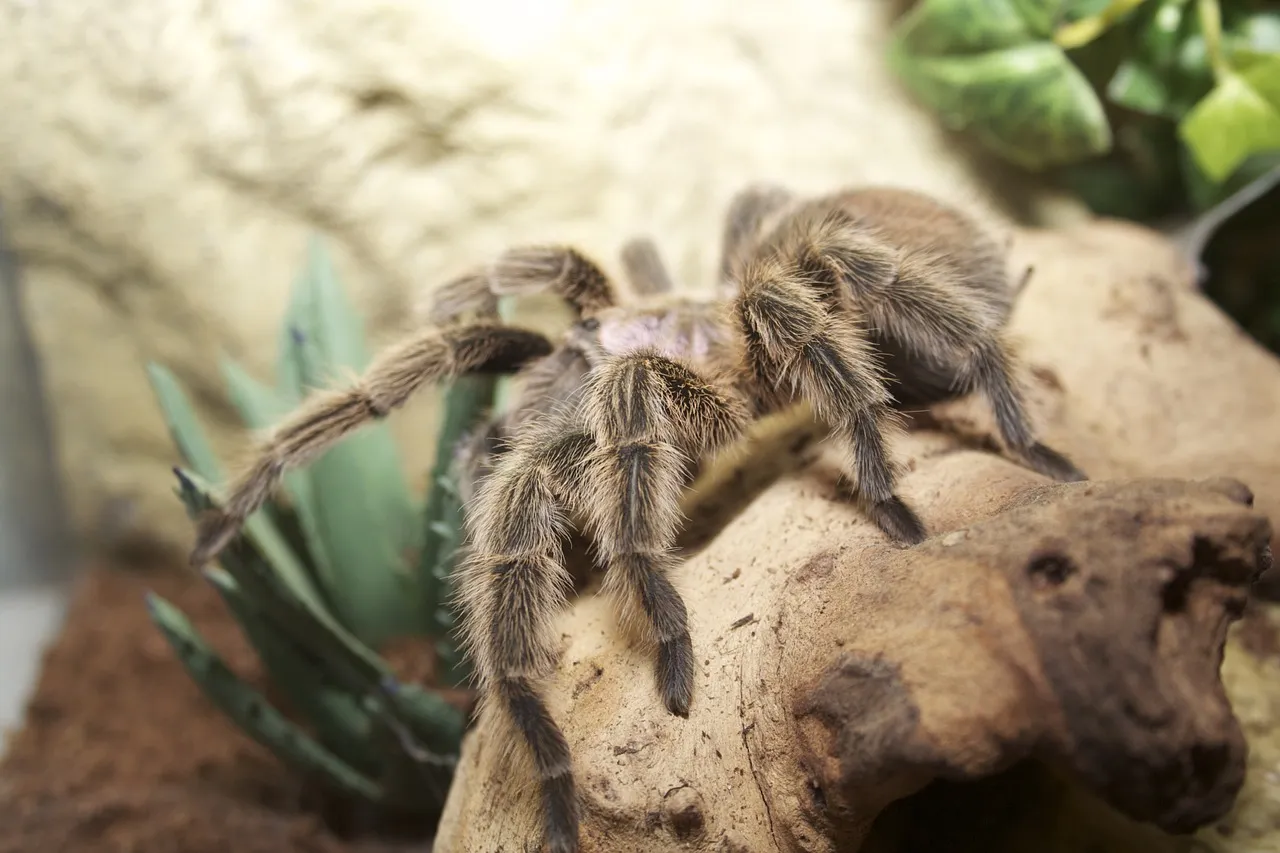What is Burrowing
Burrowing is a natural behavior exhibited by many tarantula species, including the Chilean Rose Tarantula. It involves digging and creating underground tunnels and chambers within their enclosure. These burrows serve multiple purposes, primarily providing a safe and secure habitat where the tarantula can regulate its environment, hide from potential threats, and conserve energy. The construction of these burrows is a fascinating process, with tarantulas using their fangs, legs, and pedipalps to excavate and manipulate substrate materials like soil, coco coir, or peat moss. The complexity of the burrow can vary depending on the species and the individual tarantula’s preferences, but it typically includes a main tunnel, one or more chambers for resting, molting, and occasionally, for storing food. Understanding burrowing behavior is crucial for providing an appropriate and enriching environment for your Chilean Rose Tarantula, ensuring its well-being and promoting natural behaviors.
Why Do Chilean Rose Tarantulas Burrow
Chilean Rose Tarantulas burrow for several key reasons, all of which contribute to their survival and well-being in their natural and captive environments. Firstly, burrows offer protection from predators and environmental stressors. The underground tunnels provide a secure haven where the tarantula can retreat from perceived threats, such as birds, snakes, or other animals in the wild. Secondly, burrows help tarantulas regulate their body temperature and humidity levels. The deeper layers of the substrate tend to have more stable and consistent conditions, shielding the tarantula from extreme fluctuations in temperature and humidity. This is particularly important for tarantulas, as they are ectothermic animals, meaning they rely on their environment to regulate their body temperature. Thirdly, burrows are important for molting. When a tarantula is about to molt, it will often retreat into its burrow, where it feels safe and secure. This environment allows the tarantula to shed its exoskeleton in peace and without the risk of injury. Additionally, burrows provide a space for egg laying and brooding for female tarantulas.
Temperature and Humidity
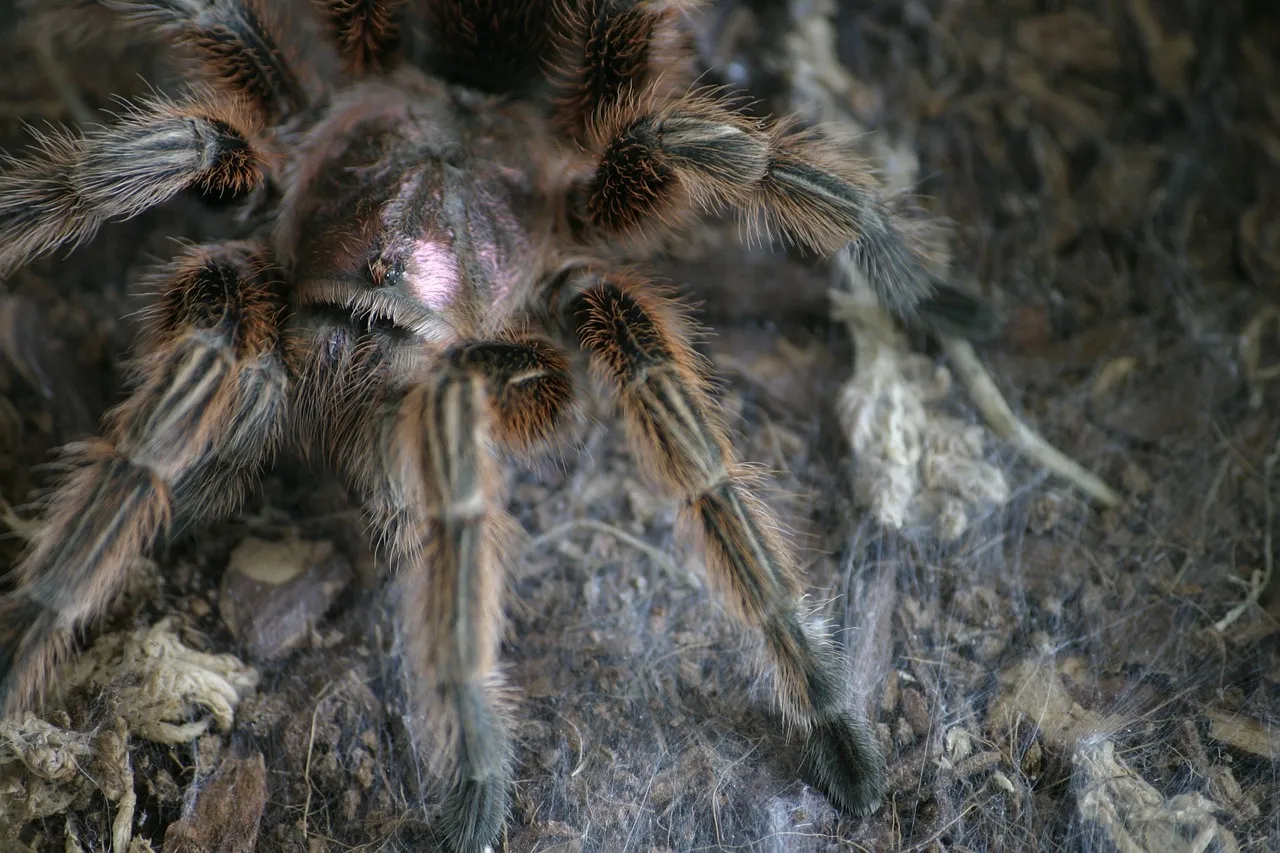
Maintaining the correct temperature and humidity levels within your Chilean Rose Tarantula’s enclosure is crucial for its health and overall well-being. These tarantulas thrive in a relatively warm and humid environment, which mimics their natural habitat. The ideal temperature range for a Chilean Rose Tarantula is typically between 75 and 85 degrees Fahrenheit (24 to 29 degrees Celsius). It’s important to provide a consistent temperature throughout the enclosure, as sudden fluctuations can stress the tarantula. You can achieve this by using a heat mat or a ceramic heat emitter, but be sure to monitor the temperature regularly with a digital thermometer to ensure it stays within the recommended range. Humidity is also a critical factor, and it should be maintained between 60% and 70%. You can monitor the humidity using a hygrometer. Regular misting of the enclosure with dechlorinated water will help to increase humidity. Proper ventilation is equally important to prevent the buildup of harmful bacteria or mold, but be careful not to over-ventilate, as this can dry out the enclosure.
Substrate Selection
Choosing the right substrate is a vital part of creating a suitable environment for your burrowing Chilean Rose Tarantula. The substrate provides the foundation for the burrow and plays a significant role in maintaining the necessary humidity levels. A good substrate should be able to retain moisture, allow for burrowing, and provide a safe and comfortable environment for your tarantula. Several substrate options are suitable for Chilean Rose Tarantulas. Coco coir, a natural fiber derived from coconut husks, is a popular choice because it retains moisture well, is readily available, and is relatively inexpensive. Peat moss is another excellent option; it holds moisture well and provides a slightly acidic environment that can help to deter the growth of mold and bacteria. A mix of coco coir and peat moss can also be used to provide a balanced substrate. Avoid using substrates that contain sharp particles, such as gravel or sand, as these can injure the tarantula’s legs and fangs. Also, steer clear of cedar or pine shavings, as the oils in these woods can be toxic to tarantulas. The depth of the substrate is another crucial factor to consider.
Depth of Substrate
The depth of the substrate in your Chilean Rose Tarantula’s enclosure is another crucial factor to consider. The depth of the substrate will allow for the tarantula to burrow naturally. A general rule of thumb is to provide a substrate depth that is at least as deep as the tarantula’s leg span, or even deeper, to encourage burrowing behavior and provide adequate space for the tarantula to create its underground tunnels and chambers. This ensures that the tarantula has enough room to dig and construct its burrow without hitting the bottom of the enclosure. For juveniles, a substrate depth of 2 to 4 inches is usually sufficient, while adults may require a depth of 4 to 6 inches or even more, depending on the size of the enclosure. Regularly monitor the substrate depth to ensure it remains adequate as the tarantula grows. Also, keep in mind that the substrate will compact over time, so you may need to add more substrate periodically to maintain the desired depth. Providing a deep substrate not only encourages natural burrowing behavior but also helps to regulate the humidity and temperature within the enclosure, contributing to the overall health and well-being of your Chilean Rose Tarantula.
Substrate Type
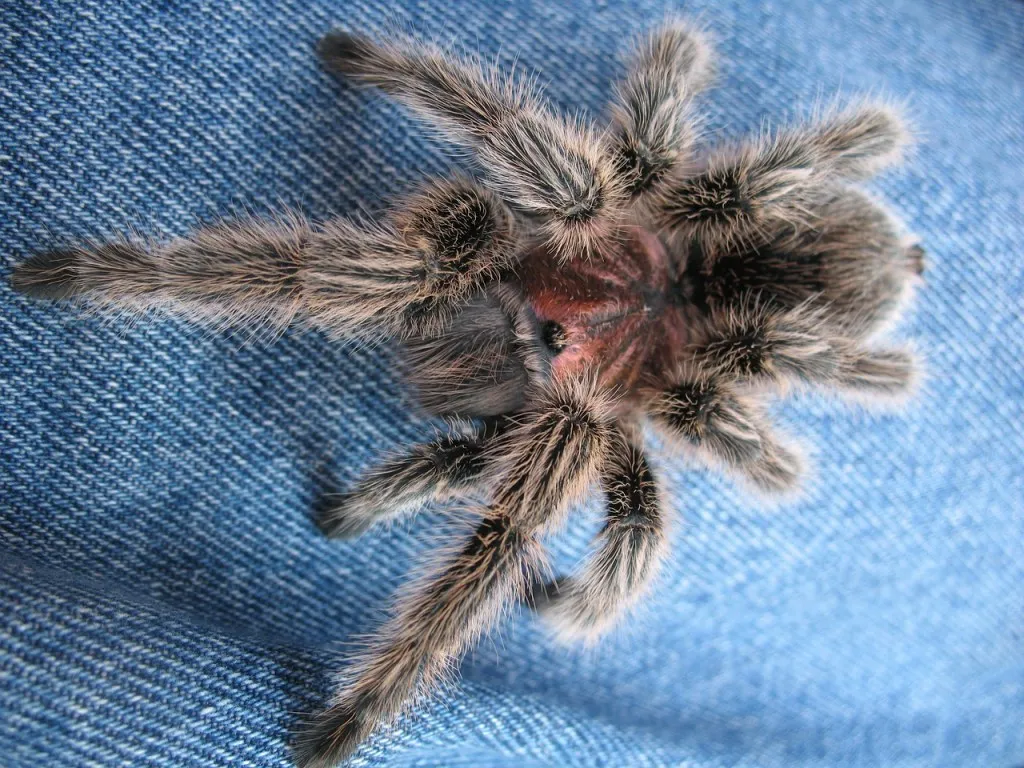
The type of substrate you choose will directly affect your Chilean Rose Tarantula’s ability to burrow and thrive. As mentioned earlier, coco coir, peat moss, and a mix of the two are excellent options. Coco coir is lightweight, readily available, and holds moisture well, making it a popular choice. It also allows for easy burrowing and provides a natural-looking environment. Peat moss is another viable option, known for its moisture-retention capabilities and slightly acidic nature, which can help prevent the growth of harmful bacteria and mold. When selecting a substrate, make sure it is free from any chemicals or additives that could harm your tarantula. Avoid substrates with sharp or abrasive particles, as these can injure the tarantula’s delicate legs and fangs. Before introducing the substrate to the enclosure, it is essential to moisten it with dechlorinated water. The substrate should be damp but not soaking wet. A proper substrate provides a good foundation for your tarantula to build its burrow and creates the right environmental conditions.
Burrowing Behavior
Observing the burrowing behavior of your Chilean Rose Tarantula is a fascinating experience. The tarantula typically begins by using its fangs, legs, and pedipalps to excavate the substrate. They will use their fangs to loosen the substrate, their pedipalps to scoop the material, and their legs to push it away. The tarantula will often start by creating a small depression and then gradually expand it, forming a tunnel or chamber. The burrow construction can take several days or even weeks, depending on the tarantula’s size, the substrate type, and the environmental conditions. Some tarantulas are more active burrowers than others, and you might notice your Chilean Rose Tarantula actively digging, moving substrate, and rearranging its burrow. This is perfectly normal and a sign that the tarantula is comfortable and establishing its territory. Once the burrow is complete, the tarantula will spend most of its time inside, venturing out only to hunt for food or when it is time to molt. The presence of a well-constructed burrow is an indication of a healthy and content tarantula. Providing the right environment and encouraging this natural behavior is a rewarding part of tarantula care.
Creating the Ideal Environment
Creating the ideal environment for your Chilean Rose Tarantula is essential to encourage natural burrowing behavior. The enclosure should be appropriately sized, with enough space for the tarantula to move around and establish its burrow. A general rule of thumb is to provide an enclosure that is at least three times the tarantula’s leg span in width and length. Provide a deep layer of appropriate substrate, as discussed earlier, to allow for burrowing. Maintain the correct temperature and humidity levels within the enclosure. Also, provide some ventilation to prevent the buildup of harmful bacteria and mold. Make sure the enclosure is secure, with a tight-fitting lid to prevent the tarantula from escaping. Avoid using any decorations that could be harmful to the tarantula, such as sharp objects or chemically treated wood. By providing the right environment, you can create a comfortable and enriching habitat that encourages your Chilean Rose Tarantula to exhibit its natural burrowing behavior.
Provide Hiding Places
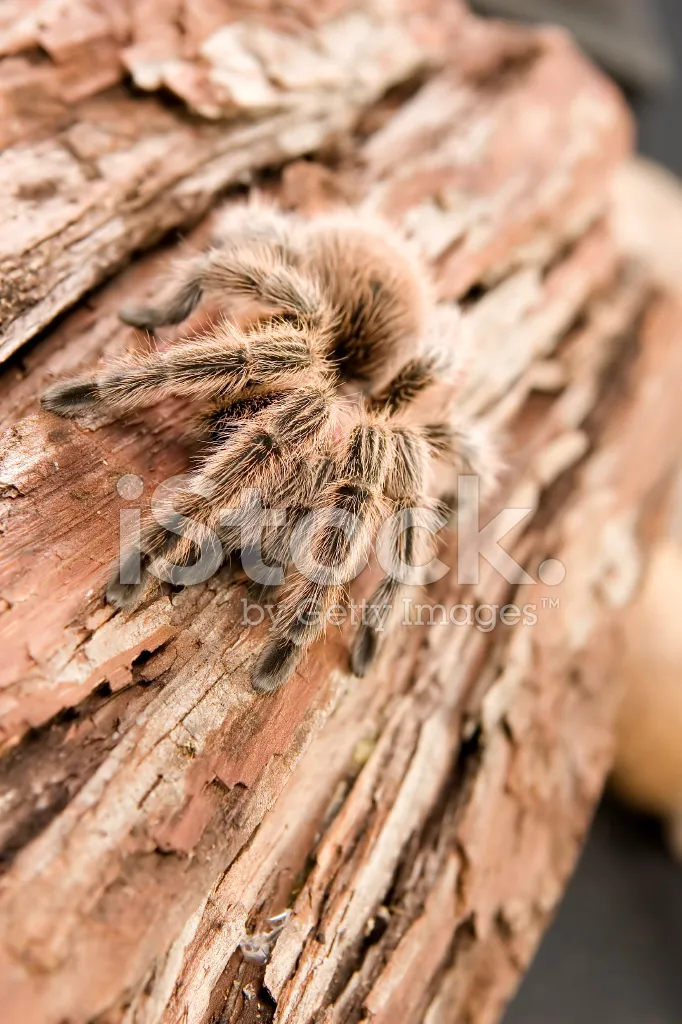
While Chilean Rose Tarantulas are known for burrowing, providing additional hiding places can further enhance their sense of security. Even if your tarantula creates a burrow, it may appreciate having supplemental hiding spots within the enclosure. This can include items like cork bark, artificial plants, or half-buried terracotta pots. These additions not only provide additional cover but also create a more stimulating and enriching environment. Place these hiding spots strategically within the enclosure, allowing the tarantula to choose where it feels most secure. The presence of these hiding places can also reduce stress and anxiety, especially during the molting process or when the tarantula feels threatened. Observe your tarantula’s behavior to determine its preferences. Some tarantulas prefer to hide in their burrows, while others may choose to use the provided hiding spots. Providing a variety of options allows your tarantula to express its natural behaviors and feel safe within its habitat.
Maintaining the Burrow
Maintaining the burrow of your Chilean Rose Tarantula involves some care. Regular monitoring of the burrow environment is crucial for the tarantula’s health. While you shouldn’t disturb the burrow excessively, you should check the humidity and substrate moisture levels. If the substrate becomes too dry, you may need to mist the enclosure lightly with dechlorinated water. Avoid overwatering, as this can lead to mold growth. Remove any uneaten food or molted exoskeletons promptly to prevent the buildup of bacteria and maintain a clean environment. You can use a long pair of tweezers or tongs to gently remove debris from the burrow entrance or near the surface of the substrate. Occasionally, you may need to spot-clean the enclosure, removing any soiled substrate and replacing it with fresh material. Be mindful of your tarantula’s stress levels during maintenance. Perform any necessary cleaning or adjustments with minimal disturbance to the tarantula. Regular maintenance will help to keep the enclosure clean and healthy, ensuring that your Chilean Rose Tarantula thrives.
Watering the Substrate
Properly watering the substrate is critical for maintaining the correct humidity levels within your Chilean Rose Tarantula’s enclosure. The substrate should be kept damp but not soaking wet. Overwatering can lead to mold and bacterial growth, which can be harmful to your tarantula. The frequency of watering depends on the substrate type, the enclosure’s ventilation, and the ambient humidity. Use a spray bottle with dechlorinated water to mist the substrate lightly. Aim for even distribution of the moisture throughout the substrate, especially in the areas where the tarantula has built its burrow. Monitor the substrate’s moisture level regularly. It should be slightly damp to the touch. If the substrate appears too dry, mist it again. If condensation appears on the enclosure walls, the humidity is likely too high, and you should reduce the misting frequency or increase ventilation. Also, provide a shallow water dish for the tarantula. The dish allows the tarantula to drink and helps to maintain humidity levels. Make sure the water dish is always filled with fresh, dechlorinated water.
Benefits of Burrowing for Chilean Rose Tarantulas
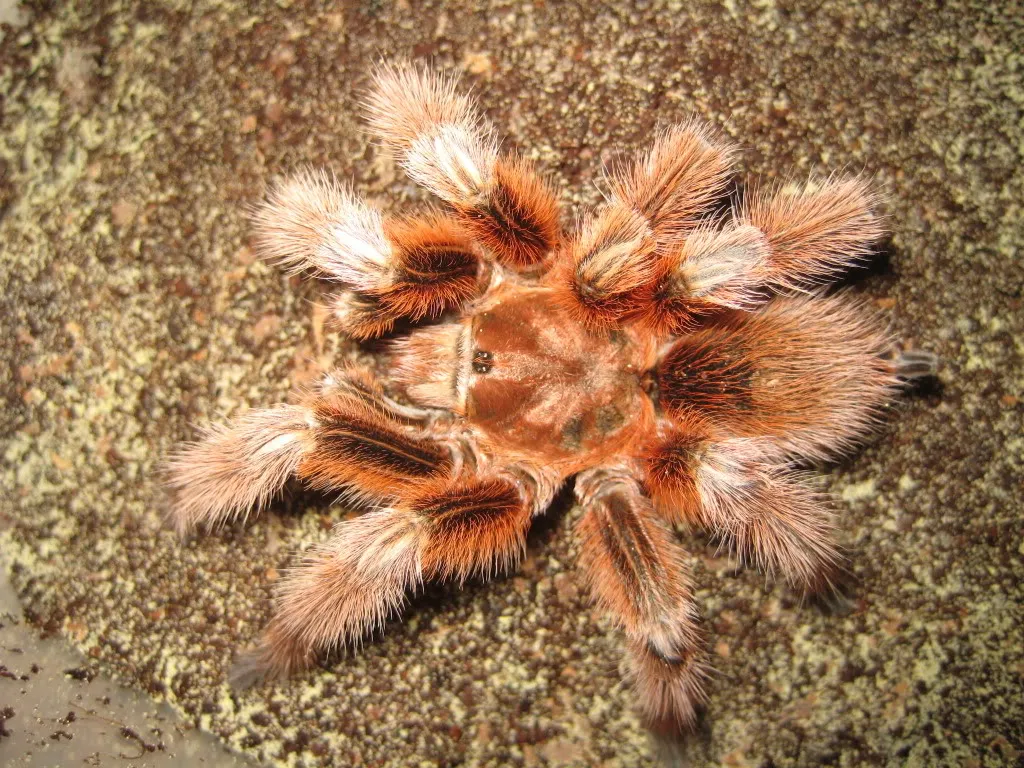
Burrowing offers numerous benefits to Chilean Rose Tarantulas, contributing significantly to their well-being and survival in both the wild and captivity. Firstly, burrows provide essential protection from environmental hazards, like predators and extreme weather conditions. The underground tunnels create a safe haven, shielding the tarantula from potential threats. Secondly, burrows facilitate thermoregulation. The stable temperatures within the burrow help the tarantula regulate its body temperature, which is essential for its metabolism and overall health. Thirdly, burrows help in humidity regulation. The soil and other substrate materials retain moisture, creating a humid environment that is crucial for the tarantula’s survival. Additionally, burrows provide a secure space for molting, a vulnerable period during which the tarantula sheds its exoskeleton. By understanding the benefits of burrowing, you can provide the necessary care to encourage this natural behavior and improve your pet’s well-being. A well-burrowed Chilean Rose Tarantula is a sign of a healthy and content pet.
